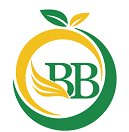Bananas (Musa spp.) are long curved fruits, green when unripe, and yellow when ripe, that are native to Indomalaya and Australia. They are mostly consumed raw when ripe and cooked when unripe. Ripe bananas also can be processed into wine (banana wine), beer (banana beer) or fiber (1).
Banana contains about 75g of water, 23g of carbohydrates, 3g of dietary fiber, 1g of protein and almost no 0.3g of fat per 100g. It also contains significant amounts of Vitamin B6 (0.4mg) which provides about 31% of the recommended daily value per 100g serving (2). The following are some fundamental health benefits of banana.
- Improves blood sugar levels. Bananas contain soluble fiber, which is not digested in the small intestines, therefore will not be absorbed into the blood stream to raise sugar levels. Bananas also contain resistant starch which isn’t digested by the body either so the presence of both soluble fiber and resistant starch in banana make it a low glycemic food. Green bananas contain significantly higher amounts of resistant starch than yellow bananas. Clinical trial studies have shown an improvement in insulin sensitivity and blood sugar control following the inclusion of resistant starch in the diet (3, 4).
- Improves blood pressure. Bananas are rich in potassium (258mg/100g) which plays a crucial role in regulation blood pressure levels in the body (2). The more potassium is consumed, the more sodium is excreted via urine. Potassium also has an easing effect on the blood vessels (vasodilation) causing blood to flow more easily and consequently reducing blood pressure. Hypertensive patients who received potassium supplementation through their diets were reported to show a reduction in blood pressure levels in one study. Maintaining a normal blood pressure level is crucial for the smooth functioning of the heart, as high blood pressure is a risk factor for the development of heart disease and stroke (5, 6).
Moreover, bananas contain a moderate amount of magnesium which also helps in the regulation of blood pressure. Magnesium boosts the production of nitric oxide which causes blood vessels to relax (vasodilation) easing blood flow (7).
- Improve gut health. Soluble fiber and resistant starch in banana are not digested in the small intestines, so both end up in the large intestines where healthy bacteria feed on them and increase in population. A good population of healthy bacteria is vital in phasing out disease causing bacteria in the gut, thereby boosting the body’s immune system. This also helps maintain the integrity of the gut as disease causing bacteria cause damage to the intestines (8).
- Enhances brain health. Bananas contain significant levels of vitamin B6, which is important for the development of the brain and nerve cells, as well as improving cognitive function. It helps in the creation of neurotransmitters, which are critical chemical messengers that transmit information from one nerve cell to another. They also regulate the use of energy in the brain (9).
- Good for weight management. Bananas are not calorie dense (89 Kcal/ 100g) and contain almost no fat (0.3g/100g), thus they make a good addition to your weight management diet plan. Though they also have a moderate carbohydrate level (23g/100g), a lot of it is fiber and resistant starch which are not digested thus will not be absorbed. Soluble fiber when consumed, also dissolves forming a viscous gel which moves slowly through the gut, thus delaying gastric emptying and keeping you feeling fuller for a longer period (10).
Bananas are delicious and very nutritious fruits that are an easy grab and go fruit especially when ripe. The USDA (United States Department of Agriculture) recommends consuming about two bananas a day. Excess consumption can trigger acid reflux and heartburn Symptoms in sensitive people. Some people are also intolerant to FODMAPs (fermentable oligosaccharides, disaccharides, monosaccharides, and polyols), of which bananas (especially ripe banana) contain. In this case they may show symptoms like stomach cramps, diarrhea, bloating, constipation, and flatulence (11, 12).
